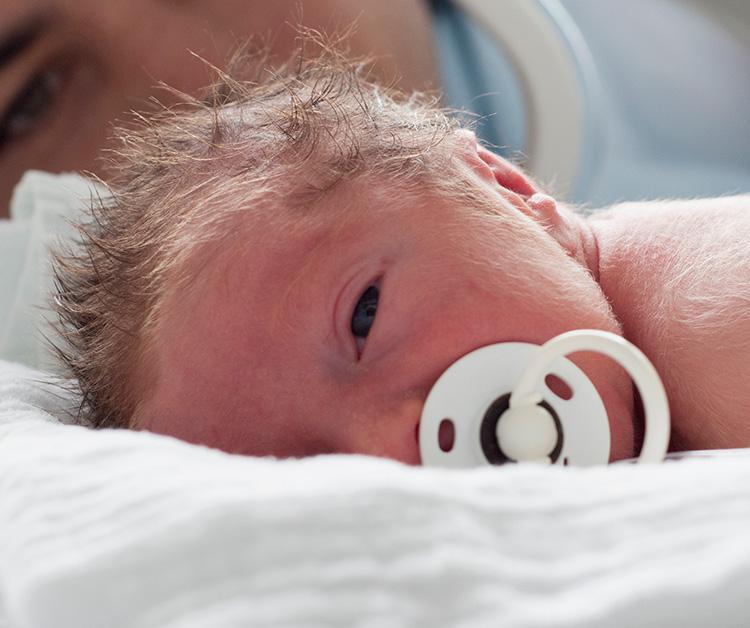No Enfamil products are affected by the recent recall initiated by another manufacturer. Learn more about our quality standards.

In this article, we'll explore the ins and outs of pacifiers, and how to make informed choices when it comes to selecting and introducing preemie pacifiers.
Pacifiers have been a staple in the world of parenting for many generations. These small, nipple-shaped devices are known to provide comfort to babies and toddlers alike. Loved by some parents for their calming effects and soothing properties, and met with skepticism by others due to potential drawbacks, pacifiers remain a topic of interest and discussion in the parenting community.
A preemie pacifier is a specially designed pacifier intended for premature infants, who need oral stimulation to help improve their ability to breastfeed and bottle feed. These pacifiers are smaller in size and are made to accommodate the delicate oral structures of preemies. They are often used in neonatal intensive care units (NICUs) to help promote development and soothe premature babies.
It’s always best to consult your healthcare provider about what types of pacifiers to use with your baby and when to use them.
When selecting a preemie pacifier, keep the following factors in mind:
Look for a pacifier specifically designed for premature babies, as they have smaller mouths and may have different oral needs compared to full-term infants.
Look for pacifiers made from medical-grade silicone or latex-free materials to minimize the risk of allergies or adverse reactions. Look for plastics that are free from BPA and DEHP.
Pacifiers with ventilation holes help to prevent the build-up of saliva, reduce skin irritation, and keep the baby's skin dry.
Choose a pacifier with a soft and flexible nipple.
Avoid pacifiers with small, detachable parts that could become choking hazards.
Using a preemie pacifier helps stimulate the sucking reflex, which is vital for preemies who might face difficulties in feeding and latching. The gentle sucking action on the pacifier can aid in the development of oral muscles, which can, in turn, facilitate better feeding skills. Preemie pacifiers also improve digestion, self- regulation, pain management, and reduces the risk for Sudden Infant Death Syndrome (SIDS).
Always talk with your neonatologist and/or pediatrician before introducing pacifiers to your little one. Introducing a pacifier too early may interfere with establishing breastfeeding.
Additionally, if not properly cleaned or sterilized, pacifiers can harbor harmful bacteria, increasing the risk of infections in premature babies with weaker immune systems. Be sure to regularly sanitize pacifiers and follow your doctor’s guidance regarding how long to use them.
When introducing a pacifier to your premature baby, follow these gentle steps:
If you're caring for a premature baby, consider checking out Enfamil Family Beginnings®, a free program offering expert advice and support for families with infants. When it comes to nourishing your baby, ask your pediatrician about EnfaCare®, which is a specialized product designed to meet their unique nutritional needs. Talk to your baby's healthcare provider about these options—they can provide helpful insights.
All information on Enfamil, including but not limited to information about health, medical conditions, and nutrition, is intended for your general knowledge and is not a substitute for a healthcare professional's medical identification, advice, or management for specific medical conditions. You should seek medical care and consult your doctor or pediatrician for any specific health or nutrition issues. Never disregard professional medical advice or delay seeking medical treatment, care, or help because of information you have read on Enfamil.